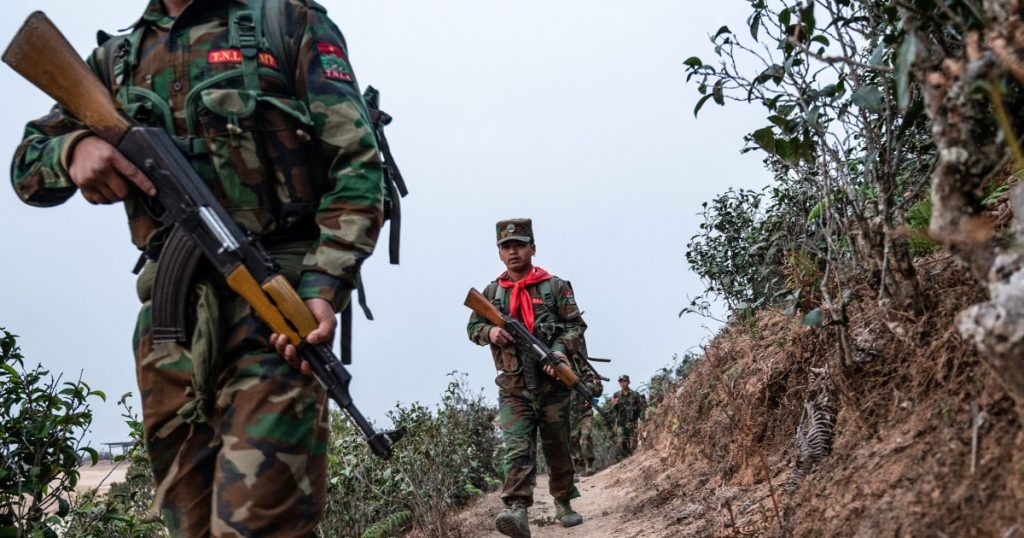In northeastern Myanmar, three well-armed militias launched a surprise joint offensive a year ago, breaking a strategic stalemate with the regime’s military. The offensive, named Operation 1027, quickly gained huge swathes of territory and inspired other attacks around the country. The military’s control had seemed firm due to its superior troops and firepower, with support from Russia and China. However, the offensive has put the military on the defensive, losing dozens of outposts and bases that they are finding challenging to regain.
The offensive began after the military seized power from the elected government of Aung San Suu Kyi in February 2021, leading to intensified fighting with armed groups associated with ethnic minority groups. The Operation 1027, involving the Three Brotherhood Alliance, quickly captured towns and military bases along the Chinese border in northeastern Shan state. Since then, other militia groups have joined in around the country. Resistance forces now control a significant territory extending from Rakhine state in the west to Kayah and Kayin states along the Thai border, pushing the Tatmadaw back towards the center around Naypyidaw and Yangon.
Many expect the military to launch a counteroffensive when the rainy season ends, with an influx of new troops and continued air superiority. However, resistance groups are closing in on Mandalay, Myanmar’s second-largest city. The military seems to be on the defensive all over the country, needing to continually shift troops to address threats in various regions. Civilians have borne the brunt of the conflict, with increased civilian deaths from airstrikes and artillery strikes. Hundreds of thousands have been displaced, adding to the over 3 million internally displaced people in Myanmar overall.
As the conflict escalates, there is a growing concern about the future of Myanmar’s civilian population. The military’s reliance on indiscriminate attacks has led to a significant increase in civilian casualties. The U.N. reports that hundreds of thousands have been displaced, adding to the already large number of internally displaced people in the country. There is fear that the situation could worsen if the military regime falls, leading to potential fragmentation unless groups work to resolve political and territorial differences.
The political landscape in Myanmar is complicated by the involvement of neighboring China, which is believed to have tacitly supported the 1027 offensive to shut down organized crime along its border. China has tried to negotiate ceasefires between the Tatmadaw and ethnic groups, but these efforts have not been successful. The influence of China adds another layer of complexity to the conflict, with potential implications for the future of Myanmar. The resistance’s ability to bring down the military regime is uncertain, but it will be crucial for groups to work together to avoid further destabilization in the country. Ultimately, the outcome of the conflict in Myanmar remains uncertain, with the future of the civilian population and the political landscape hanging in the balance.


